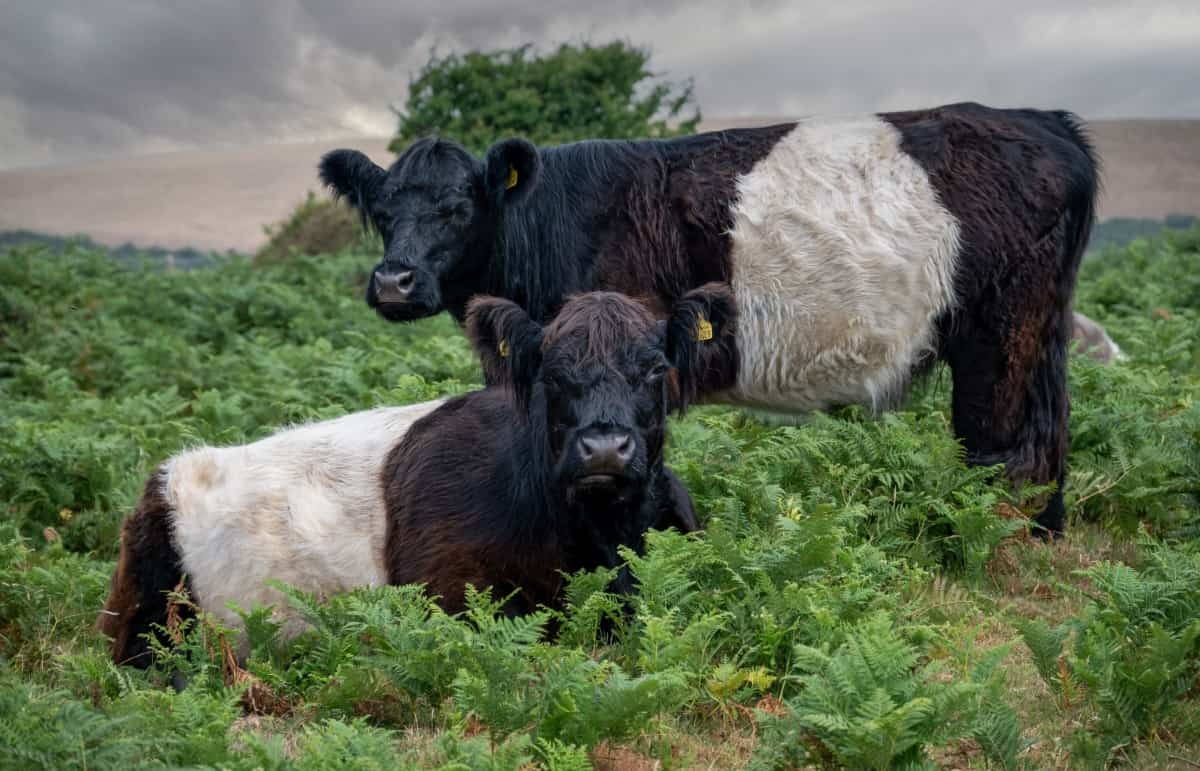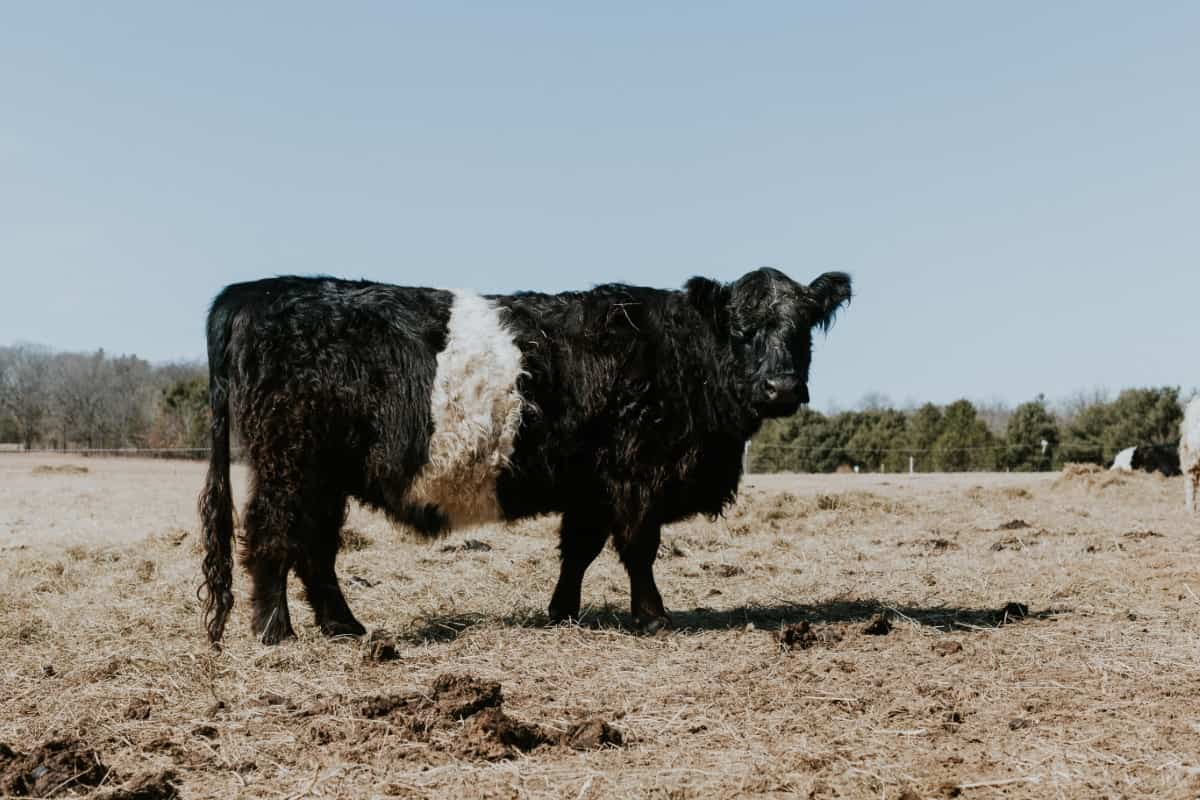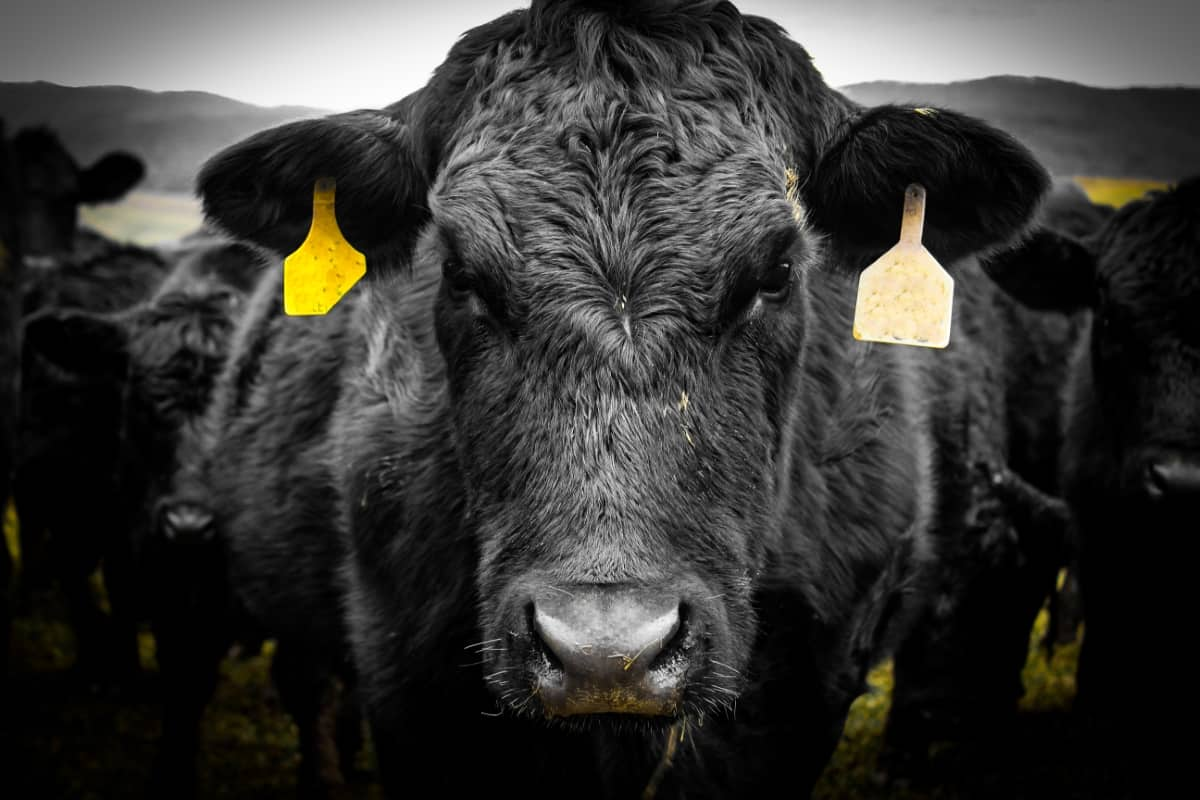Oreo cows, characterised by their distinctive black-and-white coat, are not just visually striking but also known for their adaptability and hardiness in various farming environments. This breed’s unique colouring, which resembles the Oreo cookie, has made them a subject of interest among both small-scale and commercial farmers looking to diversify their livestock with an animal that stands out in appearance and productivity.

Raising Oreo Cows
Origin and History
The origin and history of Oreo cows are often associated with specific breeds that exhibit black-and-white colouring, such as Belted Galloways or Dutch Belted cattle. These breeds share a history of being valued for their meat and dairy production qualities and their ruggedness and ability to thrive in less-than-ideal conditions, making them a versatile choice for farmers around the world.
Breed Profile
Physical Characteristics
Oreo cows typically exhibit a robust and muscular build, with adult weights varying significantly depending on the breed and management practices. Heights can range from 4 to 5 feet at the shoulder, weighing 1,000 to 1,500 pounds. The lifespan of these cows can extend up to 15-20 years with proper care, highlighting their potential as a long-term investment for farmers.
Genetic Background and Diversity
Oreo cows’ genetic background and diversity contribute to their resilience and adaptability. With genetics often stemming from breeds known for their hardiness and productivity in challenging climates, Oreo cows benefit from a rich heritage that equips them for various environmental conditions and farming practices.
Uses of Oreo Cows
Meat Production Qualities
In terms of meat production, Oreo cows are prized for their high-quality beef, with some individuals capable of producing significant quantities of meat, often exceeding 600 pounds of marketable beef per animal. This makes them a valuable asset for farmers focused on sustainable beef production, offering a product that meets the demands of consumers looking for responsibly raised beef.
Dairy Production Potential
While not traditionally known as a dairy breed, Oreo cows can also contribute to dairy production, with some capable of producing moderate amounts of milk, often ranging from 10 to 20 litres per day. This versatility adds another dimension to the breed’s utility, providing farmers opportunities to diversify their production and tap into niche markets.
Feeding and Nutrition
Basic Dietary Requirements
The basic dietary requirements of Oreo cows include a well-balanced diet of grasses, hay, and forages, which supports their health and productivity. This grass-fed approach benefits the cows’ well-being and contributes to the quality of the meat and dairy products, aligning with consumer preferences for naturally raised livestock.
Special Nutritional Needs and Management
Special nutritional needs and management practices for Oreo cows might involve supplemental feeds, particularly when forage quality is low or for cows with higher production demands. This ensures that all nutritional requirements are met, supporting optimal growth, health, and productivity.
Health and Wellness
Common Health Issues and Prevention
Common health issues in Oreo cows include parasitic infections, respiratory conditions, and hoof problems, similar to other cattle breeds. Prevention strategies involve regular health monitoring, parasite control programs, and maintaining clean, dry living conditions to mitigate disease risk and ensure the herd’s overall health.
Routine Veterinary Care and Vaccinations
Routine veterinary care and vaccinations are essential components of Oreo cow care, safeguarding against common bovine diseases and ensuring the herd remains healthy and productive. This includes regular check-ups, vaccinations, and timely interventions for any health concerns.
In case you missed it: How to Start Holstein Friesian Cow Farming in 10 Steps

Breeding Practices
Selective Breeding Strategies
Selective breeding strategies in Oreo cow farming focus on enhancing desired traits such as meat and milk quality, hardiness, and the distinctive black-and-white coat. By carefully selecting breeding stock, farmers can improve the genetic quality of their herd, ensuring the sustainability and profitability of their farming operation.
Managing Reproduction and Calving
Managing reproduction and calving involves monitoring breeding cycles, providing adequate nutrition to pregnant cows, and preparing for calving season with facilities that ensure the safety and comfort of cows and calves. This attention to detail helps maximise reproductive success and the health of newborn calves.
Housing and Shelter
Designing Suitable Living Conditions
Designing suitable living conditions for Oreo cows involves creating shelters that protect from extreme weather, adequate ventilation, and comfortable resting areas. This not only supports the cows’ physical well-being but also their overall productivity and quality of life.
Seasonal Shelter Adjustments
Seasonal shelter adjustments are necessary to accommodate changing weather conditions, ensuring that Oreo cows have access to shade and cool areas during hot months and protection from cold and wet conditions in the winter. These adjustments are crucial for maintaining the health and comfort of the herd throughout the year.
Handling and Behavior
Understanding Cow Behavior
Understanding cow behaviour is essential for effective and safe handling of Oreo cows. These cows, like many cattle breeds, exhibit social behaviours and hierarchies within the herd; recognizing these can help manage them more effectively. They respond best to calm, consistent handling, reducing stress for the animals and the handlers. Recognising signs of distress or discomfort in cows can also prevent potential issues during handling.
Best Practices for Handling and Safety
Best practices for handling and safety with Oreo cows involve using low-stress techniques, including moving slowly, gentle guidance, and avoiding loud noises or sudden movements. Facilities designed for safe handling, such as well-constructed pens, gates, and chutes, also contribute to the safety and efficiency of farm operations, minimising the risk of injury to cows and humans.
Sustainable Farming with Oreo Cows
Environmental Benefits and Challenges
Sustainable farming with Oreo cows offers environmental benefits such as improved soil health and reduced carbon footprints through rotational grazing and grass-fed beef production. However, challenges such as managing methane emissions and ensuring efficient land use must be addressed to maximize the environmental sustainability of Oreo cow farming.
Role in Sustainable Agriculture Practices
Oreo cows play a significant role in sustainable agriculture practices by contributing to biodiversity, promoting healthy ecosystems, and supporting the viability of small farms. Their capacity to thrive in diverse environments and sustain themselves on pasture-based diets positions them as crucial components in mitigating the environmental footprint of livestock farming and advancing sustainability within agriculture.
In case you missed it: Dairy Farm Project Report With 10 Cows: Cost and Profits with ROI Calculations

Marketing and Product Sales
Niche Markets for Oreo Cow Products
Niche markets for Oreo cow products include consumers and retailers looking for sustainably produced, high-quality beef and dairy products. The unique appearance and the story behind Oreo cows can also appeal to markets interested in heritage breeds and those supporting small-scale, local farms. Investigating these specialized markets can unlock fresh avenues for farmers to vend their goods at higher rates.
Strategies for Marketing Meat and Dairy
Strategies for marketing meat and dairy from Oreo cows involve highlighting the products’ quality, sustainability, and unique aspects. This can include using social media, farmer’s markets, and direct-to-consumer sales to reach interested buyers. Developing relationships with local restaurants and specialty food stores that value locally sourced and sustainable products can also be an effective marketing strategy. Highlighting the grass-fed, free-range origin of the products and the adoption of sustainable farming methods can appeal to consumers who are willing to invest more in food that reflects their ethical beliefs.
Conclusion
Raising Oreo cows offers a unique opportunity for farmers to engage in sustainable agriculture while producing high-quality beef and dairy products. Marketing these distinctive products effectively can tap into niche markets, supporting the growth and sustainability of Oreo cow farming.
- Feed Your Flock for Less: Top 10 Tips to Save on Chicken Feed
- Ultimate Guide to Ossabaw Island Hog: Breeding, Raising, Diet, and Care
- Hatching Answers: The Top 10 Reasons Your Chickens Aren’t Laying Eggs
- Eggs and Economics: Breaking Down the Cost of Raising Backyard Chickens
- Defend Your Greens: Proven Methods to Keep Iguanas Out of Your Garden
- Ultimate Guide to Cinnamon Queen Chicken: A Comprehensive Guide for Beginners
- Ultimate Guide to California Tan Chicken: Breeding, Raising, Diet, Egg-Production and Care
- Ultimate Guide to Marsh Daisy Chicken: Breeding, Raising, Diet, and Care
- 10 Types of Chicken Farming Businesses You Can Start for Profits